Types of Electrical Switches
 Electrical Switches
are electromechanical devices that are used in electrical circuits to
control power, detect when systems are outside their operating ranges,
signal controllers of the whereabouts of machine members and work
pieces, provide a means for manual control of machine and process
functions, control lighting, and so on. Switches come in a variety of
styles and are actuated by hand, foot, or through the detection of
pressure, level, or objects. Switches can be simple on-off types or can
have multiple positions that, for instance, can control the speed of a
multi-speed fan. Switch operators can be found in various shapes and
sizes, such as toggles or buttons, and can be furnished in a variety of
colors.
Electrical Switches
are electromechanical devices that are used in electrical circuits to
control power, detect when systems are outside their operating ranges,
signal controllers of the whereabouts of machine members and work
pieces, provide a means for manual control of machine and process
functions, control lighting, and so on. Switches come in a variety of
styles and are actuated by hand, foot, or through the detection of
pressure, level, or objects. Switches can be simple on-off types or can
have multiple positions that, for instance, can control the speed of a
multi-speed fan. Switch operators can be found in various shapes and
sizes, such as toggles or buttons, and can be furnished in a variety of
colors.Types of Electrical Switches
Switch function is defined by the number of poles and throws the switch has. “Poles” are individual circuits the switch controls (e.g., a “3-pole” switch has three circuits controlled by the same throw). “Throws” are unique positions or settings for the switch (e.g., a “double-throw switch” can operate in two different positions like on/off, high/low, etc.). Combining the number of poles and throws gives a succinct description of the switch’s function, so the function of, for instance, a “single-pole, double-throw” switch is implicit. Switch types are commonly abbreviated for brevity, so a single-pole, double-throw switch would be referred to as an “SPDT” switch.The simplest type of switch is a single-pole, single-throw (SPST) device that functions as an on-off switch. Double-pole, double-throw (DPDT) switches are commonly employed as internal polarity reversing circuits. Switches of up to four poles and three throws are common and some have breaks.
Foot Switches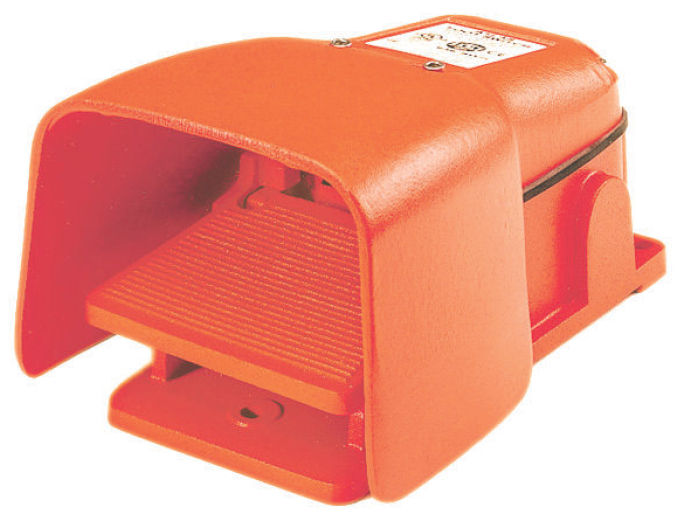
Foot
Switches are electro-mechanical devices used to control power in an
electrical circuit by foot pressure. They are often used on machines
where an operator needs his or her hands to stabilize a workpiece.Key specifications include number of pedals, switching function, voltage rating, and current rating.
Foot switches find use in many press applications where hand controls cannot be used to actuate a cycle. They are also commonly used in hospital equipment and office machines.
Level Switches
 Level
Switches are electro-mechanical devices used to detect the level of
liquids, powders, or solids. They are mounted in tanks, hoppers, or
bins, and can provide output to a control system. In some instances they
can be used to actuate a device directly, such as level switches used
in residential sump pumps.
Level
Switches are electro-mechanical devices used to detect the level of
liquids, powders, or solids. They are mounted in tanks, hoppers, or
bins, and can provide output to a control system. In some instances they
can be used to actuate a device directly, such as level switches used
in residential sump pumps.Key specifications include measured media, output type, switch type, voltage and current ratings, and the materials used for the body, stem, and float.
Level switches are used extensively in the process industries to monitor tank and hopper levels. They are used in everyday applications as well.
Limit Switches
 Limit
Switches are electro-mechanical devices designed to sense motion and
position mechanically and provide output signals to a controller. They
are available as bare switches, or in rugged enclosures intended for the
tough environment of a factory floor.
Limit
Switches are electro-mechanical devices designed to sense motion and
position mechanically and provide output signals to a controller. They
are available as bare switches, or in rugged enclosures intended for the
tough environment of a factory floor.Key specifications include actuator type, voltage, and current ratings. A variety of actuator types from rods to whiskers ensures that any manner of machine, component, or work pieces can be sensed by a limit switch.
Limit switches are used in many common consumer machines such as washing machines. In their ruggedized form they are used in many types of manufacturing facilities such as steel mills and paper plants.
Membrane Switches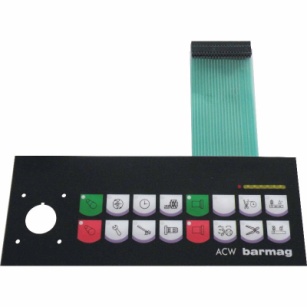
Membrane Switches are circuit board based electro-mechanical devices that provide tactile
control of processes and machines without the need for individual push
switches. They are often custom designed to suit a particular process.Key specifications include circuit assembly type, actuator type, and terminal type. Number of keys, graphics, illumination, and displays can also be important features.
Membrane Switches are common in commercial products where incorporating all control functions into a single device can save costs over using discrete switches.
Pressure Switches
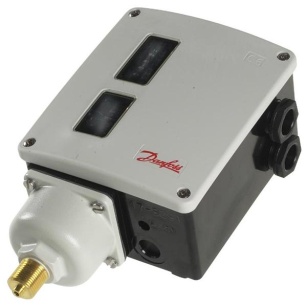 Pressure
Switches are electro-mechanical devices used to sense fluid pressure
and provide output signals to a controller. They often employ a
diaphragm as the sensing means.
Pressure
Switches are electro-mechanical devices used to sense fluid pressure
and provide output signals to a controller. They often employ a
diaphragm as the sensing means.Key specifications include the pressure type, media measured, diaphragm material, pressure connection, minimum and maximum working pressures, and maximum switch current.
Pressure switches are used to keep pressure within limits in lubrication systems where over-pressure or under-pressure conditions can result in damage to the machine.
Pull Chain Switches
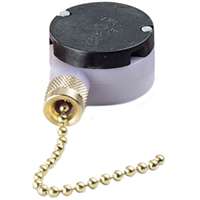 Pull
Chain Switches are electro-mechanical devices that are hand operated
and used to switch a circuit on and off, or step a circuit through
increasing power levels. Their most common application is in lighting
where they are used to switch lamps. Pull Rope Switches are used as
emergency stop devices.
Pull
Chain Switches are electro-mechanical devices that are hand operated
and used to switch a circuit on and off, or step a circuit through
increasing power levels. Their most common application is in lighting
where they are used to switch lamps. Pull Rope Switches are used as
emergency stop devices.Key specifications include switching function, voltage and current ratings, as well as various features specific to e-stop applications such as broken-cable detection.
Pull chain switches can be used for manual control of overhead lights and fans. As rope-pull switches, they are used for emergency stop devices, for example along the length of an in-running roll. They are sometimes called Rope Pulls or Cable Pulls.
Pushbutton Switches
 Pushbutton
Switches, also referred to as Push Switches, are hand operated
electro-mechanical devices used for switching circuits. They are the
most common variety of switch used on industrial control panels.
Pushbutton
Switches, also referred to as Push Switches, are hand operated
electro-mechanical devices used for switching circuits. They are the
most common variety of switch used on industrial control panels.Key specifications include single-throw or double-throw switching function, contact type, mounting type, actuator type, and panel cut-out diameter. The 30 mm cut-out is a common industrial size.
Pushbutton switches make up the bulk of manual switches used in industrial controls. They are available in a variety of shapes and styles to cover almost any manual control scenarios.
Rocker Switches
Rocker
Switches are hand operated electro-mechanical devices used for
switching circuits. The switch operator position, raised or depressed,
gives a quick visual indication of the circuit's on or off status.Key specifications include single-throw or double-throw switching function, mounting type, actuator type, and panel cut-out dimensions.
Rocker switches are used for manual switching in many industrial controls as well as for control of consumer goods and office machines.
Rotary Switches
 Rotary
Switches are hand operated electro-mechanical devices used for
switching circuits and selecting functions. Rotary switches can be
two-position, on-off, or they can have multiple discrete stops.
Rotary
Switches are hand operated electro-mechanical devices used for
switching circuits and selecting functions. Rotary switches can be
two-position, on-off, or they can have multiple discrete stops.Key specifications include number of poles, number of positions, construction type, mounting type, and panel cut-out diameter for panel mount switches.
Rotary switches are used to provide a visually verifiable means of switch position, allowing operators to tell with a glance whether a circuit is energized or not. They are also called Paddle Switches.
Slide Switches
 Slide
Switches are hand operated electro-mechanical devices used for
switching circuits. The switch operator is in the form of a slider that
moves from position to position to control the circuit status.
Slide
Switches are hand operated electro-mechanical devices used for
switching circuits. The switch operator is in the form of a slider that
moves from position to position to control the circuit status.Key specifications include single-throw or double-throw switching function, mounting type, and panel cut-out dimensions.
Slide switches are used in electrical and electronic equipment where the switching range can be limited and economy is important. They are commonly used for on-off buttons or just as a general control switch.
Thumbwheel / Pushwheel Switches
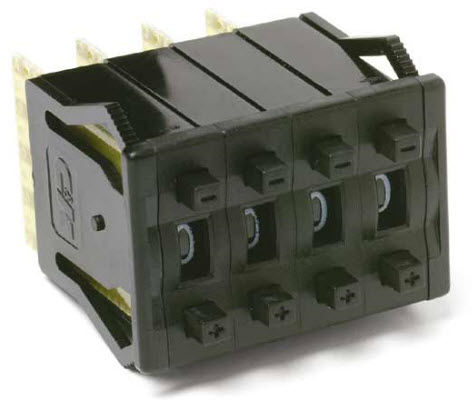 Thumbwheel
Switches, also referred to as Pushwheel Switches, are hand operated
electro-mechanical devices used to control electrical circuits with a
rotatable wheel. They display a numeric value corresponding to the
switch position.
Thumbwheel
Switches, also referred to as Pushwheel Switches, are hand operated
electro-mechanical devices used to control electrical circuits with a
rotatable wheel. They display a numeric value corresponding to the
switch position.Key specifications include number of positions, mounting type, actuator type, coded output type, and panel cut-out dimensions.
Thumbwheel switches are widely used in the aviation industry for flight controls, instrumentation, and controllers. They are also used in test and measurement equipment and computer devices.
Toggle Switches
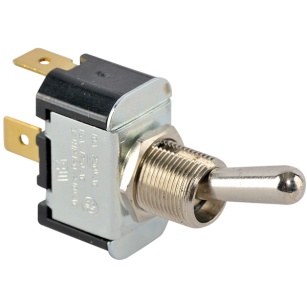 Toggle
Switches are hand operated electro-mechanical devices used for
switching circuits. They are actuated by a lever which is pushed through
a small arc. Moving the lever back and forth opens and closes an
electrical circuit, while the lever position gives a quick visualization
of the circuit status.
Toggle
Switches are hand operated electro-mechanical devices used for
switching circuits. They are actuated by a lever which is pushed through
a small arc. Moving the lever back and forth opens and closes an
electrical circuit, while the lever position gives a quick visualization
of the circuit status.Key specifications include single-throw or double-throw switching function, 1-axis, 2-axis, or 3-axis configuration, or in some cases omnidirectional or joystick toggle configuration, and actuator type.
Toggle switched are used extensively in electronics panels and instrumentation where a wider range of switching function is required, such as in switchboards.
Wall Switches
 Wall
Switches are hand operated electro-mechanical devices used in
residential and commercial buildings most commonly for lighting control.
They are also used to control ceiling fans and electrical outlets.
Wall
Switches are hand operated electro-mechanical devices used in
residential and commercial buildings most commonly for lighting control.
They are also used to control ceiling fans and electrical outlets.Key specifications include combination device function, actuator type, and additional switch functions such as dimmer control, fan speed control, or timer-based switching.
Wall switches are specifically designed to operate on line voltage and fit inside standard electrical boxes. They are standard items in residential and commercial construction. A variety of decorator or designer styles can set these switches apart from industrial switches where aesthetics are less of a concern.
Applications and Industries
Switches are used in myriad applications in every industry—such as aerospace, automotive, chemical, communication, marine, medical, military, petrochemical, and transportation—as well as in the commercial and residential sectors. A ubiquitous technology, switches can be found as part of the user interface for nearly every electrical and mechanical product. Some typical places to find switches include:- Access / Exit Control
- Aircraft
- Ammeters
- Appliances
- Brake Systems
- Conveyors
- Cranes
- Doors
- Electropneumatics
- Emergency Stop
- Escalators
- HVAC
- Hydraulics
- Ignition / Starter
- Instruments
- Machine Tools
- Motors
- Pneumatics
- Pressure Vessels
- Process Control
- Safety Interlock
- Scrubbers
- Separators
- Speed Control
- Sumps
- Tanks
- Transformers
- Valves
- Voltmeters
Generally, the specific application will help determine what kind of switch is best for the job. Because the switch’s form factor is so critical, a selection can’t be made until the purpose is determined.
Considerations
Poles, Throws, and Form Factor
Because different applications will require different kinds of switches—both in terms of their form factor and the number of poles and throws—it’s important to know what the switch is needed for prior to making a purchasing decision.For instance, a simple light switch might need only one pole and one throw, but it could take many forms: A pull chain, pushbutton, rocker, rotary, slide, toggle, and the familiar wall switch are all common. Another example would be a level switch used to detect if a tank is getting close to its capacity; this kind of switch has just one major form factor but can have different combinations of poles and throws. Switch selection must be made with the entire system’s function and goals in mind.
Also keep in mind that different form factors will have different physical considerations—an electrical rotary switch will have a maximum power rating you must be aware of but a level switch will not, and a pressure switch will have a pressure rating that a wall switch will not.
Pricing and Quality
Switch prices and build quality can vary dramatically. The simplest, cheapest switches can cost only a few dollars while complicated systems can cost hundreds apiece. Quality can be hard to judge but an industry standard certification will ensure that a given switch meets certain minimum guidelines prescribed by a respected agency or government.There are no important distinctions between most new, used, rebuilt, and remanufactured switches. New switches will be more expensive but should come with a warrantee; pre-owned switches will be cheaper but may not have a warrantee or may have lower reliability. This tradeoff must be carefully weighed, especially for critical components and applications.
Please keep in mind that this category refers to electrical switches, not network switches.

ResponderEliminarIt is very useful and knowledgeable. Therefore, I would like to thank you for the efforts you have made in writing this article.
C9200-48T-E
C9300-24T-E
C9300-24t-A
C9500-NM-8X